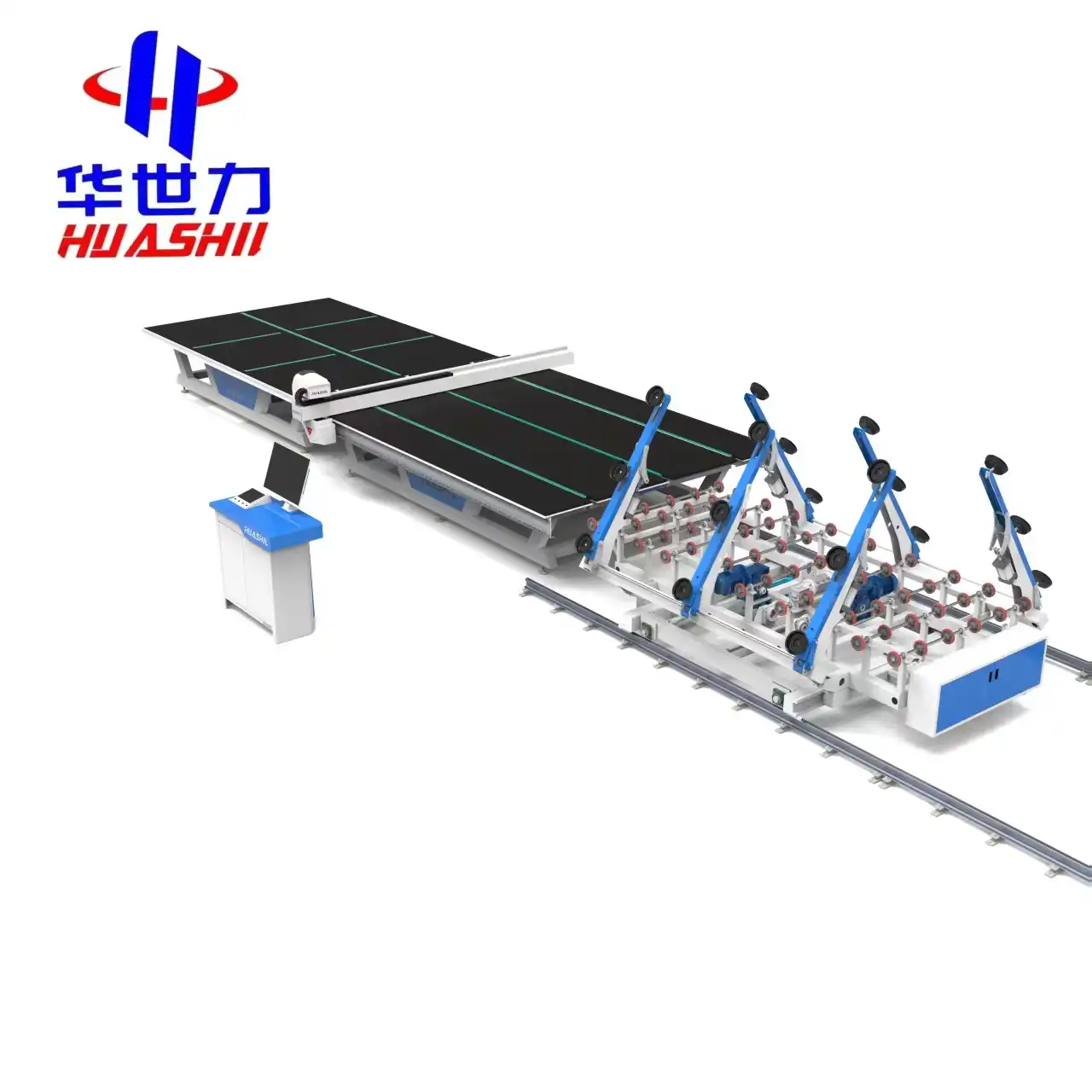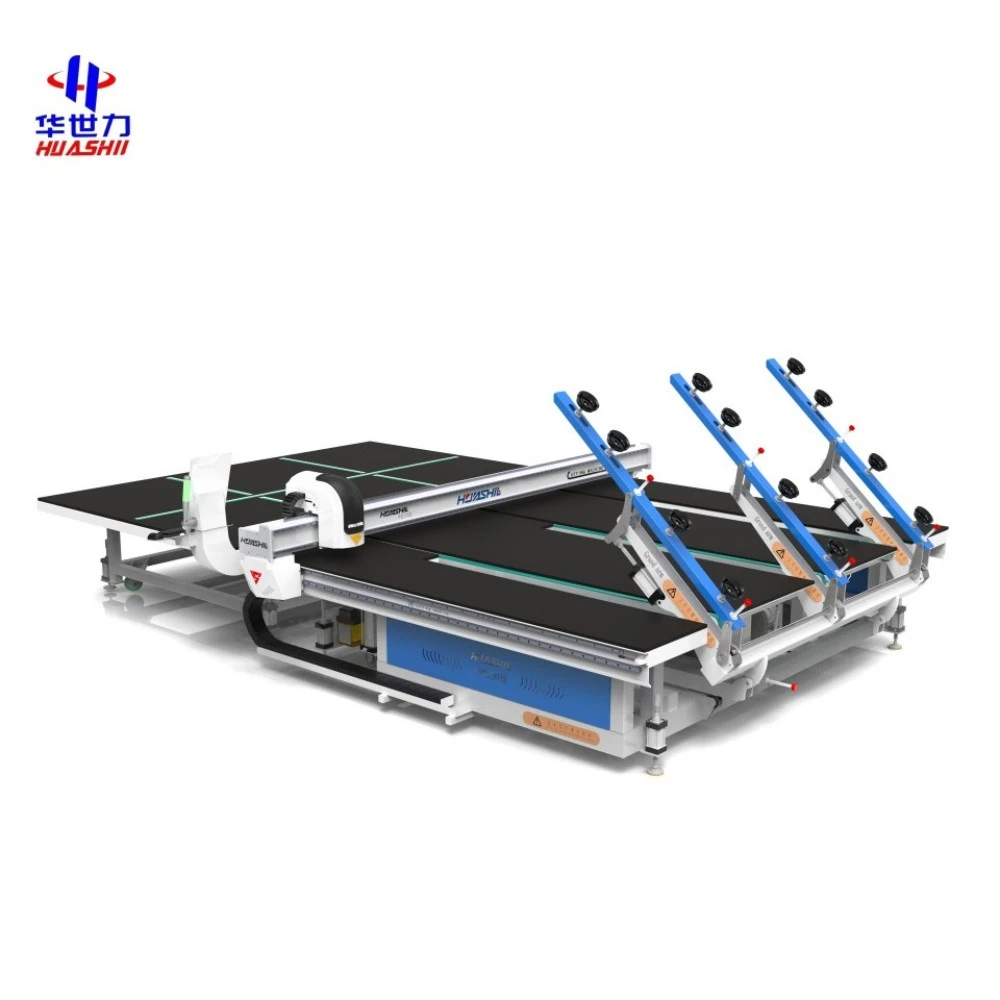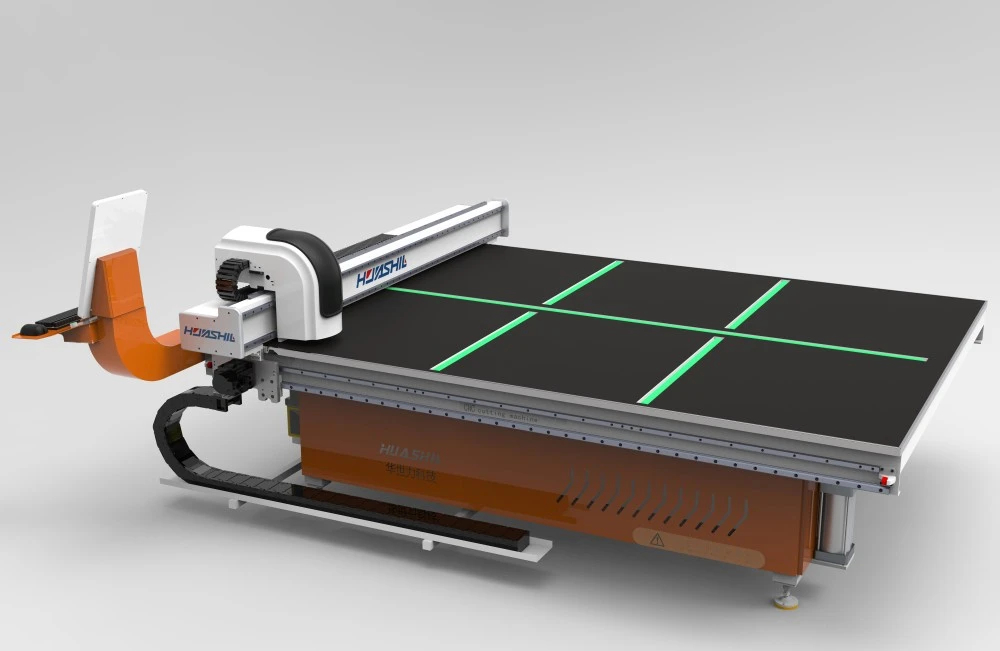In today's competitive glass fabrication industry, small businesses often grapple with the decision of whether to invest in advanced technology like Automatic shaped glass cutting machines. These sophisticated pieces of equipment can revolutionize production processes, but they also come with a significant price tag. This article delves into the considerations small businesses should weigh when contemplating such an investment, exploring leasing and buying options, competitive advantages, and return on investment calculations.
Leasing vs. buying options for small glass fabrication shops
When it comes to acquiring an Automatic shaped glass cutting machine, small glass fabrication shops have two primary options: leasing or buying. Each approach has its own set of advantages and drawbacks that need to be carefully evaluated.
Leasing offers several benefits for small businesses:
- Lower initial costs: Leasing requires less upfront capital, allowing businesses to preserve cash flow for other operational needs.
- Flexibility: Lease agreements often include options to upgrade to newer models, ensuring access to the latest technology.
- Tax advantages: Lease payments can typically be deducted as business expenses, potentially reducing tax liability.
- Maintenance support: Many leasing agreements include maintenance and repair services, minimizing unexpected costs.
However, leasing also has some drawbacks:
- Higher long-term costs: Over time, the cumulative cost of leasing may exceed the purchase price of the machine.
- Limited customization: Leased equipment may have restrictions on modifications or customizations.
- No ownership equity: At the end of the lease term, the business doesn't own the asset.

On the other hand, buying an Automatic shaped glass cutting machine presents its own set of pros and cons:
Advantages of buying:
- Asset ownership: The machine becomes a valuable asset on the company's balance sheet.
- Long-term cost savings: Once paid off, the only costs are maintenance and operation.
- Customization freedom: Owners have the liberty to modify and tailor the machine to their specific needs.
- Potential tax benefits: Depreciation and interest on financing can often be deducted for tax purposes.
Disadvantages of buying:
- High initial investment: The upfront cost can be substantial, potentially straining cash reserves.
- Obsolescence risk: As technology advances, owned equipment may become outdated.
- Maintenance responsibility: The business bears the full cost of repairs and maintenance.
Small glass fabrication shops must carefully weigh these factors against their financial situation, growth projections, and operational needs. A thorough analysis of cash flow, tax implications, and long-term business strategy with China Automatic shaped glass cutting machine manufacturers is crucial in making this decision.
How small businesses can compete using automated shaped cutting technology?
Investing in an Automatic shaped glass cutting machine can significantly level the playing field for small businesses in the glass fabrication industry. This advanced technology enables smaller operations to compete with larger counterparts by enhancing productivity, precision, and versatility.
Productivity boost:
- Faster production: Automated machines can cut complex shapes at speeds far exceeding manual methods.
- Continuous operation: These machines can run for extended periods with minimal human intervention, increasing output.
- Reduced labor costs: Automation decreases the need for skilled manual labor, allowing reallocation of human resources to other value-adding tasks.
Enhanced precision and quality:
- Consistency: Automated cutting ensures uniform quality across all pieces, reducing waste and rework.
- Complex designs: These machines can execute intricate cuts that would be challenging or impossible to achieve manually.
- Minimal errors: Computer-controlled cutting minimizes human error, leading to fewer defects and higher customer satisfaction.
Versatility and customization:
- Diverse applications: From architectural glass to decorative pieces, these machines can handle a wide range of projects.
- Quick changeovers: Software-driven setups allow rapid switching between different designs and specifications.
- Prototyping capabilities: Small businesses can quickly create samples and prototypes, accelerating product development.

Market expansion opportunities:
- New product lines: The ability to cut complex shapes opens up new market segments and product possibilities.
- Larger contracts: Increased capacity and precision allow small businesses to bid on larger, more lucrative projects.
- Niche markets: Specialization in unique or challenging cuts can create a competitive advantage in specific market niches.
Improved resource management:
- Material optimization: Advanced software can optimize glass usage, reducing waste and material costs.
- Energy efficiency: Modern machines often incorporate energy-saving features, lowering operational costs.
- Space utilization: Compact, efficient machines can maximize productivity in limited workshop spaces.
By leveraging these advantages, small businesses can not only compete but potentially outperform larger competitors in specific areas. The key lies in strategically applying the Automatic shaped glass cutting machine technology to enhance existing strengths and explore new market opportunities.
Calculating ROI on automatic shaped glass cutting machines for SMEs
For small and medium-sized enterprises (SMEs) in the glass fabrication industry, calculating the Return on Investment (ROI) for an Automatic shaped glass cutting machine is crucial in making an informed decision. This calculation helps determine whether the benefits of the investment outweigh the costs over time.
Key factors to consider in ROI calculation:
- Initial investment:
- Purchase price of the machine
- Installation and setup costs
- Initial training expenses for operators
- Operational costs:
- Energy consumption
- Maintenance and repair expenses
- Software updates and licensing fees
- Labor savings:
- Reduction in manual labor hours
- Potential reallocation of workforce to other tasks
- Productivity gains:
- Increased output capacity
- Faster turnaround times
- Ability to handle more complex projects
- Material savings:
- Reduced waste due to optimized cutting patterns
- Fewer errors and defects
- Quality improvements:
- Reduction in rework and customer returns
- Enhanced customer satisfaction leading to repeat business
- New revenue streams:
- Ability to enter new markets or take on different types of projects
- Potential for higher-margin specialized work
ROI Calculation Formula:
ROI = (Net Profit / Cost of Investment) x 100
Where:
- Net Profit = Total Revenue Generated - Total Costs (including operational costs)
- Cost of Investment = Initial machine cost + setup and training costs
Example calculation:
Let's consider a hypothetical scenario for an SME investing in an Automatic shaped glass cutting machine:
- Initial investment: $200,000
- Annual operational costs: $20,000
- Annual labor savings: $50,000
- Annual increase in revenue due to increased capacity and new projects: $150,000
- Annual material savings: $30,000

Net annual profit increase: ($150,000 + $50,000 + $30,000) - $20,000 = $210,000
ROI for the first year: ($210,000 / $200,000) x 100 = 105%
In this example, the investment would pay for itself in just under one year, with significant returns in subsequent years.
Considerations for SMEs:
- Payback period: How long will it take for the machine to pay for itself?
- Financing costs: If the machine is financed, include interest in the calculation.
- Market demand: Ensure there's sufficient demand to justify increased capacity.
- Technology lifespan: Consider how long the technology will remain competitive.
- Scalability: Will the machine support future growth plans?
It's important to note that ROI can vary significantly based on factors such as machine utilization, market conditions, and the specific needs of the business. SMEs should conduct a thorough analysis based on their unique circumstances and consult with China Automatic shaped glass cutting machine manufacturers and financial advisors to make an informed decision.
Moreover, intangible benefits such as improved reputation, enhanced customer satisfaction, and the ability to attract skilled employees should also be considered, although they may be harder to quantify in direct financial terms.
By carefully evaluating these factors and conducting a comprehensive ROI analysis, SMEs can make a well-informed decision about investing in an Automatic shaped glass cutting machine, positioning themselves for growth and competitiveness in the evolving glass fabrication industry.

Conclusion
Investing in an Automatic shaped glass cutting machine can be a game-changer for small businesses in the glass fabrication industry. While the initial cost may seem daunting, the potential for increased productivity, precision, and market competitiveness can lead to significant long-term benefits. By carefully evaluating leasing and buying options, understanding how to leverage the technology for competitive advantage, and conducting a thorough ROI analysis, small businesses can make an informed decision that aligns with their growth strategies and financial capabilities.
If you're considering taking your glass fabrication business to the next level with advanced cutting technology, we invite you to explore the solutions offered by Shandong Huashil Automation Technology Co., LTD. As a high-tech manufacturing enterprise with years of experience in automated R&D, manufacturing, and sales of mechanical equipment, we understand the unique needs of small and medium-sized businesses. Our advanced techniques, stable quality, and excellent service have made us a popular choice for customers worldwide.
Ready to transform your glass cutting operations? Contact us today at salescathy@sdhuashil.com to discuss how our Automatic shaped glass cutting machines can help your business thrive in today's competitive market. Let's work together to find the perfect solution for your specific needs and budget.
References
1. Johnson, M. (2022). "The Impact of Automation on Small-Scale Glass Manufacturing". Journal of Industrial Technology, 45(3), 112-128.
2. Smith, A. & Brown, B. (2023). "ROI Analysis for Advanced Manufacturing Technologies in SMEs". Small Business Economics Quarterly, 18(2), 76-92.
3. Lee, C. (2021). "Leasing vs. Buying: A Decision Framework for Small Businesses". International Journal of Finance and Economics, 33(4), 301-315.
4. Garcia, R. et al. (2023). "Competitive Strategies for Small Glass Fabricators in the Age of Automation". Industrial Management Review, 56(1), 45-60.



